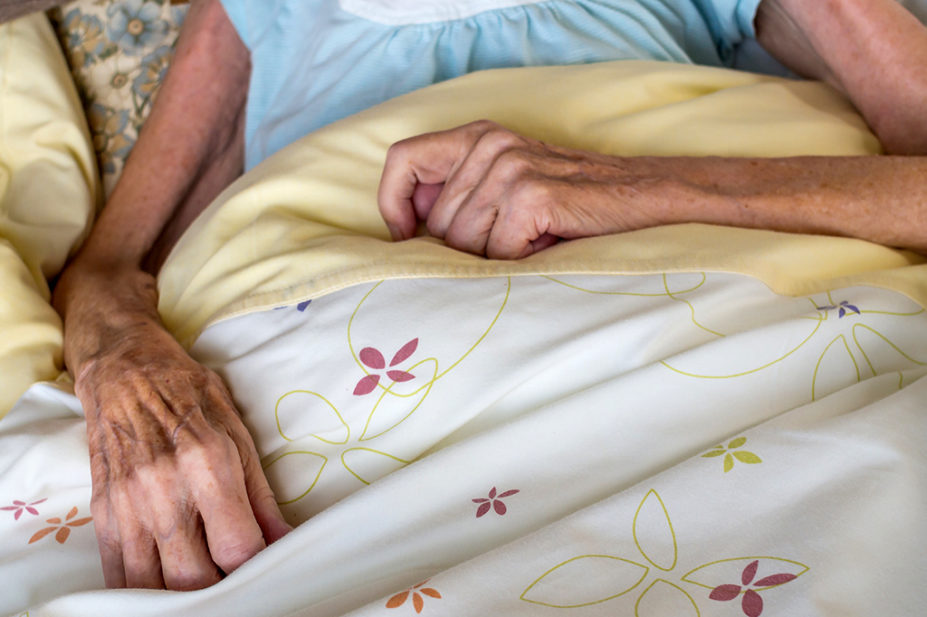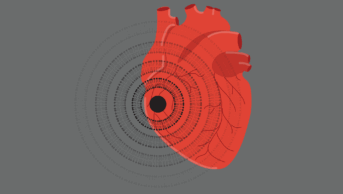
Shutterstock.com
There are more than 1 million people in the UK with atrial fibrillation (AF), raising their personal risk of a stroke by 20%. However, there is widespread undertreatment. Estimates indicate that if AF was adequately treated, around 7,000 strokes would be prevented and more than 2,000 lives saved each year in England alone[1].
The mainstay of treatment for AF is anticoagulation[1]. Direct oral anticoagulants (DOACs) are recommended in guidance from the National Institute for Health and Care Excellence (NICE) for the prevention of stroke in patients with AF. There are currently four DOACs licensed in the UK for the prophylaxis of stroke in non-valvular atrial fibrillation (NVAF)[2].
Before the introduction of DOACs, warfarin was the mainstay of anticoagulant treatment; however, it now accounts for less than a third of all oral anticoagulant prescriptions. Of nearly 19 million NHS prescriptions for oral anticoagulants issued in England between September 2019 and August 2020, some 13 million were for DOACs and 6 million were for warfarin. Although, these data do not differentiate if they are used for indications other than stroke risk, such as the treatment of venous thromboembolism (VTE)[3].
The first DOAC, dabigatran, was approved in 2010, followed by rivaroxaban, apixaban and edoxaban. Apixaban is the most frequently prescribed DOAC, with 6.6 million prescriptions between September 2019 and August 2020 — accounting for half of all DOAC prescriptions in this time period[2,3].
All DOACs show superiority or non-inferiority compared with warfarin in clinical trials[4–7]. The advantages of DOACs over warfarin include fewer monitoring requirements, less drug or food interactions, fixed dosing regimens, and quicker onset and offset of action, which may be beneficial during perioperative management.
International normalised ratio monitoring for patients on warfarin can be problematic at the best of times, but even more so during the COVID-19 pandemic. We can therefore expect an ongoing increase in the proportion of DOAC prescriptions compared with warfarin prescriptions, as healthcare professionals have been asked to switch patients, where appropriate, to reduce patient contact[8].
The licensed dosing for apixaban in NVAF is 5mg twice daily, with a dose adjustment to 2.5mg twice daily if two out the following three criteria are met:
- Age ≥80 years
- Body weight ≤60kg
- Serum creatinine ≥133umol/L.
A dose reduction is also recommended if creatinine clearance (CrCl) is 15–29mL/min[9]. There is no routine monitoring of therapeutic levels, as with warfarin, but it is recommended that CrCl is measured annually, and renal function, liver function and full blood count monitored every six months in frail patients[10].
As it stands, DOACs should not be used in patients with a body mass index of >40kg/m2 or who weigh >120kg because of limited clinical data for morbidly obese patients. The available evidence suggests that decreased drug exposure, reduced peak concentrations and shorter drug half-lives are observed in patients with increased weight, raising concerns about underdosing in this group[11].
Where DOACs must be used in this group of patients, a drug-specific peak and trough level (anti Xa for apixaban, edoxaban and rivaroxaban; ecarin clotting time or dilute thrombin time with appropriate calibrators for dabigatran) should be checked. If the level is found to be below the expected range, it is recommended to switch to a warfarin, rather than adjusting the dose of DOAC[11].
In the treatment of VTE, NICE considers extreme body weight as <50kg or >120kg and it recommends prescribers consider anticoagulant treatment with regular monitoring of therapeutic levels (i.e. warfarin or low molecular weight heparin [LMWH] to ensure effective anticoagulation)[12]. This is because there is limited data for the use of DOACs in extreme low body weights; for example, the patient group in the ARISTOTLE trial, [which evaluated apixaban versus warfarin in the treatment of patients with atrial fibrillation], had a median weight of 82kg, with the interquartile range 70–96kg[4].
Despite this, in our experience, even low-weight patients are routinely offered DOACs as the anticoagulant of choice, owing to ease of dosing and monitoring, and this may have been made even more likely by the COVID-19 pandemic. There was no mention of weight in the guidance on switching patients to DOACs to reduce patient contact during the pandemic[8].
The lack of guidance around weight is problematic because, while there is national guidance for DOAC use in those who are morbidly obese, the same cannot be said for those at the other extreme. The summary of product characteristics for apixaban states that a body weight of <50kg is associated with approximately 30% higher drug exposure in the pharmacokinetic profile[9]. This means patients of low weight may be being over-anticoagulated if they are taking DOACs, putting them at risk of serious bleeds.
And patients of low body weight, aged under 80 years and with normal renal function will be at particular risk as they are likely to not have been dose-adjusted to the lower licensed dose of 2.5mg twice daily in the case of apixaban (based on the criteria above).
However, there are ways that DOACs can be safely used in patients with low body weight. After finding low-weight patients that are being over-anticoagulated on DOACs, our stroke team at Doncaster Royal Infirmary has begun to use the anti-factor Xa assay, or anti-Xa, test to monitor whether DOACs are in the therapeutic range.
Anti-Xa testing is commonly used to monitor plasma heparin levels in patients who are on long-term LMWH; however, its use for DOAC therapy is uncommon. We have started to perform the anti-Xa test in extreme body weights (weight <50 kg or >120kg) and have identified some significant results in some patients, where the results do not correlate with the manufacturer product license dosing advice (see box with case examples).
In summary, we believe that measuring anti-Xa levels for DOACs should be considered when these drugs are used in patients with extremely low or high body weights. DOACs offer considerable advantages, compared with warfarin, particularly during a viral pandemic that is restricting personal contact with patients. However, we should have a more cautious approach in our low body weight patients and consider DOACs as an alternative option only when adequate monitoring has been put in place to ensure patient safety.
Patrick Mok is senior clinical pharmacist in stroke and diabetes, Sarah Stephenson is a IMT 3 doctor and Syed Zafar is consultant physician in stroke medicine at Doncaster and Bassetlaw Teaching Hospitals NHS Foundation Trust.
Box: Case examples
Case one: A woman aged 77 years with known atrial fibrillation admission with left middle cerebral artery infarct. Her weight was 42kg; serum creatinine 69umol/L with creatine clearance (CrCl) 43mL/min. Going by the product dosing guidance, this patient should have been on 5mg apixaban twice daily. She was taking apixaban 2.5mg twice daily pre-admission. It was hypothesised that she may have been under-anticoagulated, resulting in an ischaemic stroke. After the acute phase of her stroke, her apixaban was restarted at the higher dose 5mg twice daily as per product licence. Her anti-Xa level was checked with a result of 484ng/mL (range: 60–320ng/mL), which is over the therapeutic level. When it was reduced back to 2.5mg twice daily, the anti Xa level was 214ng/mL — within the therapeutic level. This information was communicated to the GP so that they know we have prescribed the medication outside of the product licence.
Case two: A patient aged 78 years was admitted with a fall, and was discharged two weeks previously with new diagnosis of paroxysmal atrial fibrillation and anaemia of chronic disease (haemoglobin 84g/L). She was started on apixaban 2.5mg twice daily at that time, despite her serum creatinine being 77mmol/L and weight 40kg. Her CrCl was 33mL/min. She would have warranted 5mg twice daily according to the product licence, but was given 2.5mg instead owing to frailty. We measured her anti-Xa level, which was 260ng/mL, which is within the therapeutic level. We continued the 2.5mg dose and communicated the information to the GP.
- 1Atrial Fibrillation: Information and Resources. Stroke Association UK. https://www.stroke.org.uk/professionals/atrial-fibrillation-information-and-resources (accessed Aug 2021).
- 2Atrial fibrillation: management. NICE clinical guideline [CG180]. National Institute for Health and Care Excellence. 2014.https://www.nice.org.uk/guidance/cg180/resources/atrial-fibrillation-management-pdf-35109805981381 (accessed Aug 2021).
- 3EBM DataLab. OpenPrescribing. 2020.https://openprescribing.net/ (accessed Aug 2021).
- 4Granger CB, Alexander JH, McMurray JJV, et al. Apixaban versus Warfarin in Patients with Atrial Fibrillation. N Engl J Med 2011;365:981–92. doi:10.1056/nejmoa1107039
- 5Patel MR, Mahaffey KW, Garg J, et al. Rivaroxaban versus Warfarin in Nonvalvular Atrial Fibrillation. N Engl J Med 2011;365:883–91. doi:10.1056/nejmoa1009638
- 6Connolly SJ, Ezekowitz MD, Yusuf S, et al. Dabigatran versus Warfarin in Patients with Atrial Fibrillation. N Engl J Med 2009;361:1139–51. doi:10.1056/nejmoa0905561
- 7Giugliano RP, Ruff CT, Braunwald E, et al. Edoxaban versus Warfarin in Patients with Atrial Fibrillation. N Engl J Med 2013;369:2093–104. doi:10.1056/nejmoa1310907
- 8INR testing for out-patients on warfarin during COVID-19 restrictions. British Society of Haematology Haemostasis and Thrombosis Task Force. 2020.https://b-s-h.org.uk/media/18170/inr-testing-for-out-patients-on-warfarin-during-covid-19-restrictions_26-03-2020.pdf (accessed Aug 2021).
- 9Eliquis 5mg film coated tablets summary of product characteristics: Bristol-Myers Squibb-Pfizer. Medicines.org. 2015.https://www.medicines.org.uk/emc/product/2878/smpc#gref (accessed Aug 2021).
- 10Steffel J, Verhamme P, Potpara TS, et al. The 2018 European Heart Rhythm Association Practical Guide on the use of non-vitamin K antagonist oral anticoagulants in patients with atrial fibrillation. European Heart Journal 2018;39:1330–93. doi:10.1093/eurheartj/ehy136
- 11Martin K, Beyer-Westendorf J, Davidson BL, et al. Use of the direct oral anticoagulants in obese patients: guidance from the SSC of the ISTH. J Thromb Haemost 2016;14:1308–13. doi:10.1111/jth.13323
- 12Venous thromboembolic diseases: diagnosis, management and thrombophilia testing. NICE guideline [NG158]. National Institute for Health and Care Excellence. 2020.https://www.nice.org.uk/guidance/ng158/resources/venous-thromboembolic-diseases-diagnosis-management-and-thrombophilia-testing-pdf-66141847001797 (accessed Aug 2021).


